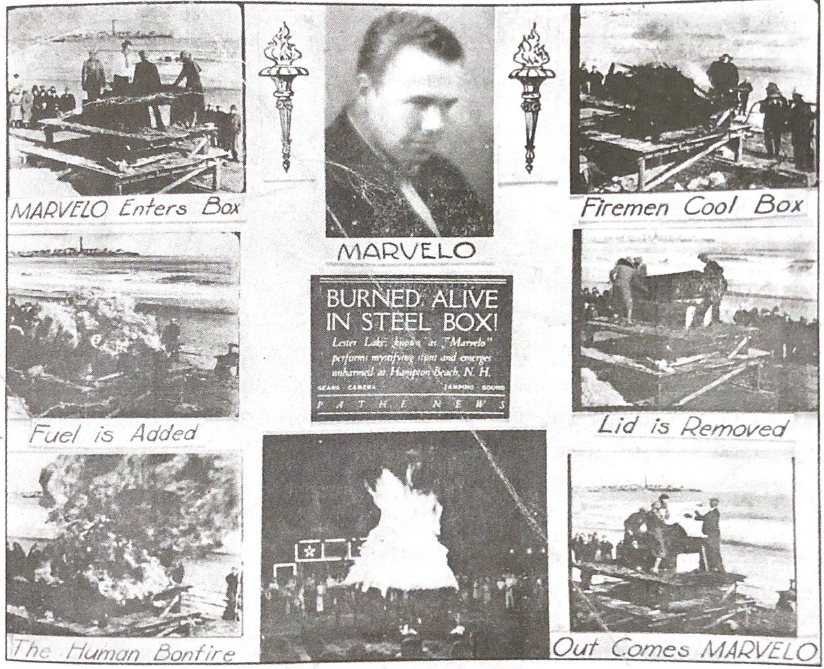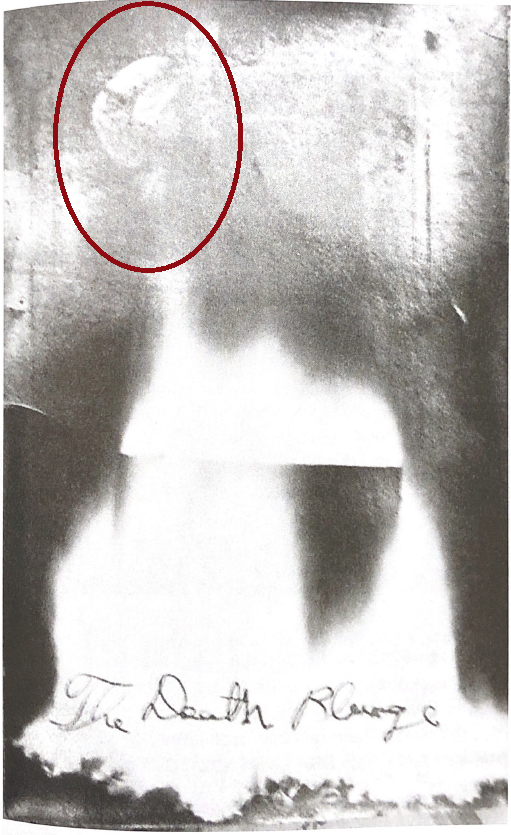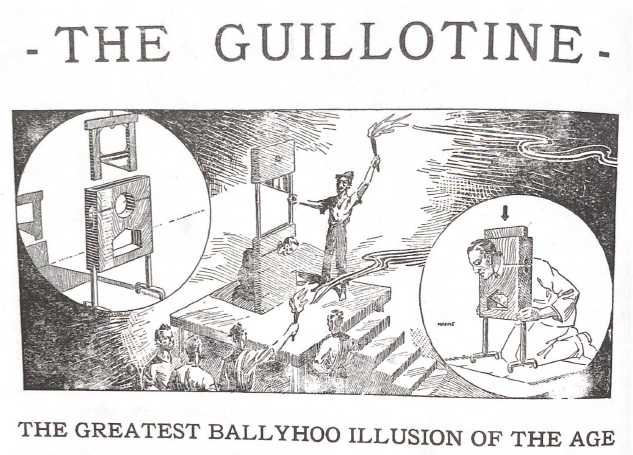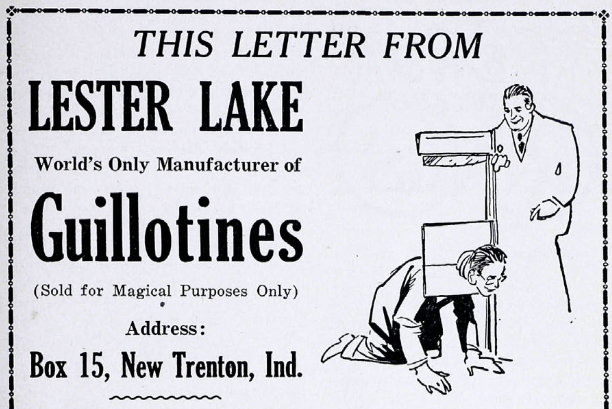
Lester “Marvelo” Lake was born in 1904 in the small town of New Trenton, Indiana, where his father owned a local dry goods store. It was in that store that Lake met a man who would change his life. The man remains unnamed in the story told to a reporter, but Lake recalled “Then came . . . an old timer that kindly showed me some tricks and very nicely ruined me forever.” Magic came to be not only a passion for the outgoing and entertaining young Hoosier. It would become his profession.
Lake’s magic career spanned from 1925 to 1960. He performed shows in theaters, parks, and nightclubs from California to Louisiana, as well as abroad in Europe and Cuba. The changes in his career reflected closely the changes in the entertainment industry. Early in his career, during the tail end of the “Golden Age of Amusement Parks,” Lake was contracted to perform multiple daily shows at Forest Park in Dayton, Ohio. As the Great Depression set in, Lake began travelling more frequently for work, going wherever he could get a gig – mostly in small theatres and nightclubs. However, Lake’s importance comes not from his performances but from his many inventions.
Lake is credited with either inventing or improving upon 300 tricks and illusions during his career. First independently, and later in conjunction with Abbott’s Magic Co. of Colon, Michigan, Lake invented and sold versions of popular illusions such as the Indian rope trick, 3-card monte, and a sword-box. Some of his most notable developments were his spectacular outdoor performance pieces – Boiled Alive and Burned Alive, as well as the Lester Lake Guillotine.
Boiled Alive
Outdoor venues such as amusement parks were the perfect venues for spectacular illusions. Lake’s first large scale outdoor illusion was Buried Alive, versions of which had been performed by the likes of Harry Houdini and Howard Thurston. After gaining some notoriety for his performance of Buried Alive, he began performing a new illusion of his own creation – Boiled Alive. The illusion is described in the Dayton Daily News:

“Permitting himself to be bound with chains and shackled, he jumps into a tank of blazing fluid, emerging a few moments later free of all his bounds and seemingly without being any the worse for his experience. That there is not fraud in the manner in which he permits himself to be bound and shackled, he permits personal inspection of his bonds by anyone so desiring, before leaping into the tank.”
Later, Lake described some of the mechanics of the illusion in a magic magazine called The Sphinx:
“Suggested measurements for the props for this effect are a platform five feet wide, twelve feet long, which is raised twelve feet from the ground on four uprights or substantial posts. The platform needs to be braced and to have a trap door in the center four feet by four feet. This trap door has two doors opening down and a release connected with a rope which runs to the edge of the platform and hangs down . . . Around the base of the tank is laid light kindling and brush wood and excelsior . . . I filled the tank practically to the top and poured a quart of gasoline on top of the after . . . After the performer has released himself from the shackles in the water, he stays down as long as he is able in order to heighted the effect.”

Perhaps due to all of the equipment involved in the production of this illusion, reports of Lake performing it are confined to his time at Forest Park. His next large scale spectacular illusion would become much more wid espread.
Burned Alive

On Monday, July 1, 1929, Lester Lake unveiled his newest act – Burned Alive. The set-up of the performance was described in The Sphinx:
“A platform was built and covered with sand. Coal oil was poured around and papers scattered about and in the center was a box of zinc construction. Lake was put into it and the lid clamped down. Then someone set4 the oil on fire. The mass burned for seven and one-half minutes, after which Lake was removed from the box, hot but unburned.”
Newspapers reported that there were some adjustments to be made for future performances, noting:
At Monday night’s performance the oven in which Lake allows himself to be placed became ‘a little too hot.’ He emerged from it as per schedule, but a little too warm under the collar. A fire that is not too hot has been ordered by Lake for future performances.
Lake denied all accusations of utilizing an oxygen tank during his performances. He explained in interviews that he employed “self-hypnosis,” a type of meditation, in both his Burned Alive and Buried Alive Acts. After being closed in the coffin (a wooden coffin was used for Buried Alive and a metal coffin was used for Burned Alive), Lake would enter a “catatonic state,” allowing him to survive on a limited amount of oxygen and withstand the high temperatures.

Lester Lake Guillotine

Probably Lake’s most recognizable illusion, the Lester Lake Guillotine, improved upon past beheading illusions. The history of decapitation illusions can be traced back to ancient Egypt. Lake’s version of the ancient trick was different in that it was portable. Weighing about 30 lbs. and transported in a briefcase-like package, the Lester Lake Guillotine was much more feasible for a travelling show and small stage than its large, cumbersome forbearers.

Unlike the Boiled Alive and Burned Alive illusions, Lake manufactured and sold the Lester Lake Guillotine, which caused him to be tight lipped on the exact construction. It is clear that, like most decapitation apparatuses that came after it, the Lester Lake Guillotine employed two blades – one above the head and one below the head – and stopper blocks hidden within the neck stock piece to stop the upper blade just before it reached the neck of the “victim.”
Lake manufactured his guillotines independently from 1931 until 1934, when he began working in conjunction with Abbott’s Magic Co. From that time on, the device became more frequently referred to as the “Head Chopper.” Later, Lake produced many similar products for the company, including The Chopper (a smaller, even more portable version of the Guillotine) and The Disecto Illusion (shown below).

Lester Lake’s contributions to the world of magic are enduring. In the years after his 1977 death, magicians continued to perform and improve illusions pioneered by “Marvelo.”
